Difference Between Ammonium Hydroxide Solution 4 and Ammonia (as NH3)
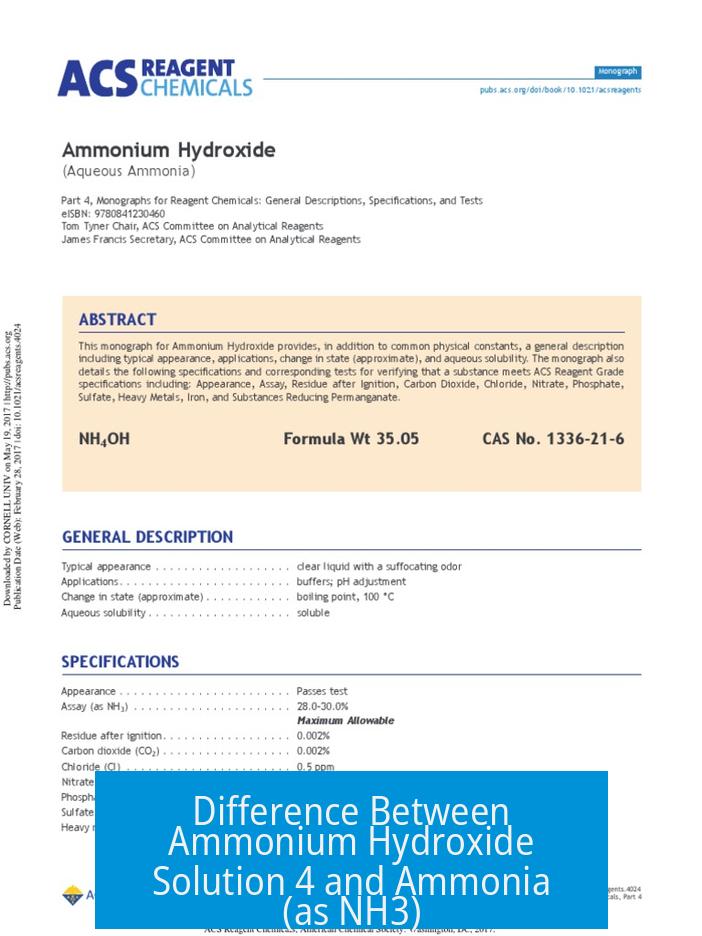
Ammonium hydroxide solution 4 and ammonia (as NH3) mainly differ in composition, naming, concentration reporting, and chemical behavior in solution. Understanding these differences clarifies their use and interchangeability in chemical and industrial contexts.
1. Composition Differences
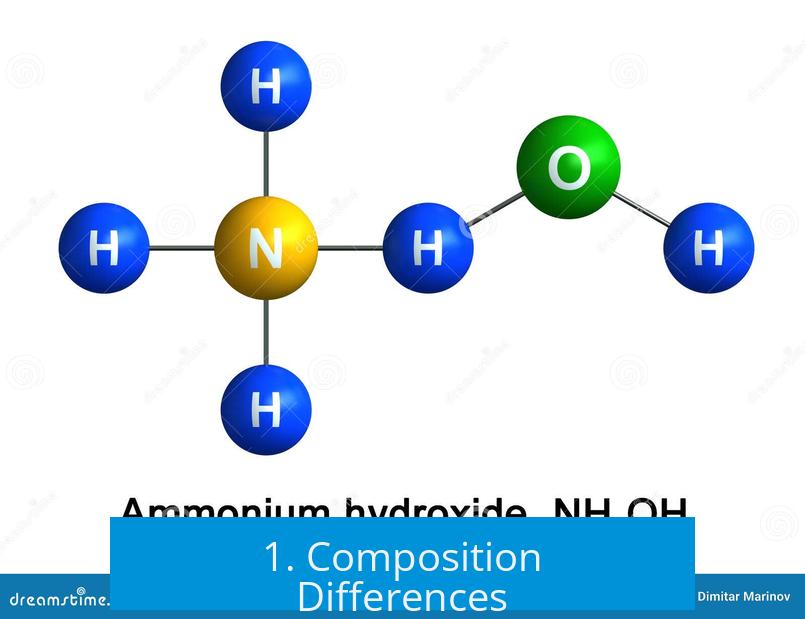
Ammonium hydroxide refers to a solution of ammonia gas dissolved in water. It primarily contains ammonia (NH3) and water, forming a clear aqueous solution.
- Ammonium Hydroxide: Ammonia dissolved in water, without additives.
- Ammonia (Cloudy Ammonia): A mixture of ammonia, water, and soap, creating a cloudy appearance distinct from pure ammonium hydroxide.
2. Chemical Nature and Terminology
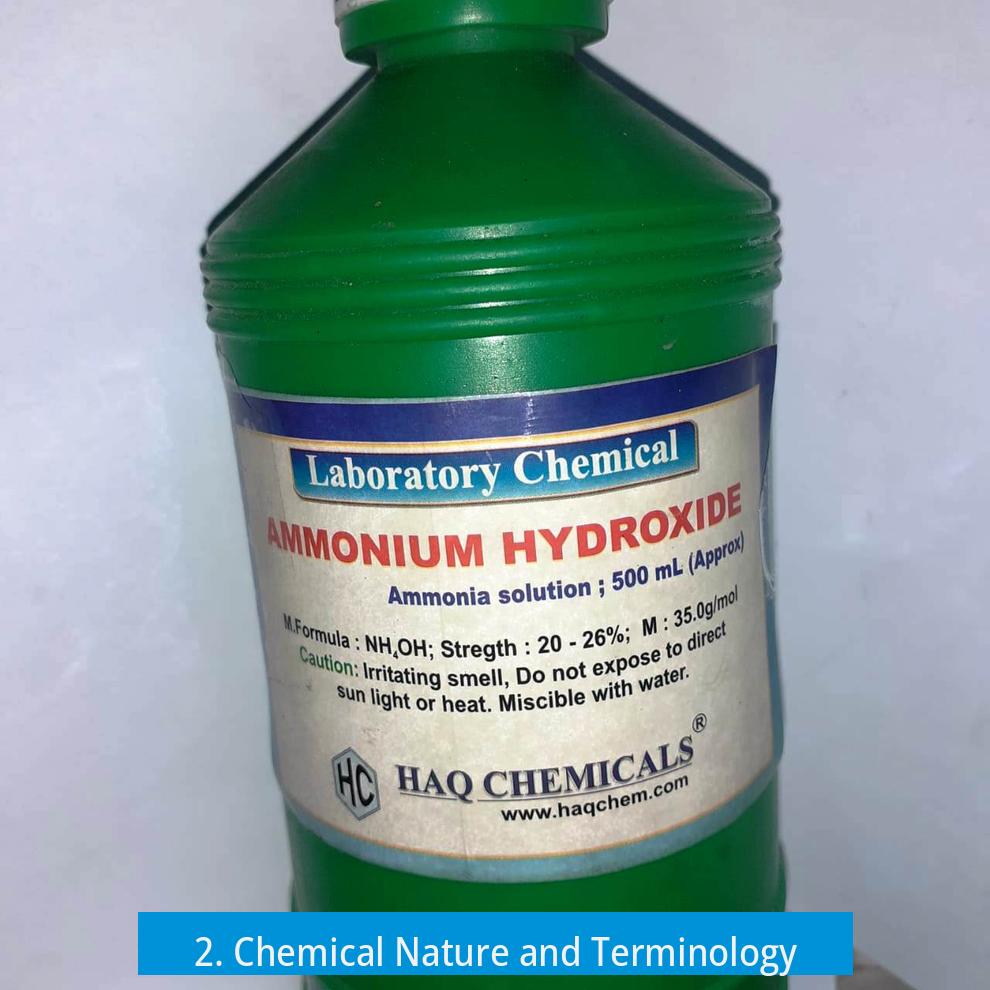
When ammonia gas dissolves in water, it establishes an equilibrium partly forming ammonium hydroxide, NH4OH. However, ammonium hydroxide rarely exists as a distinct species but as dissolved ammonia in water.
- The commonly used term ammonium hydroxide actually represents “ammonia in solution.”
- Proper nomenclature: Ammonia aqueous solution is preferred to ammonium hydroxide for accuracy.
3. Concentration and Measurement Differences
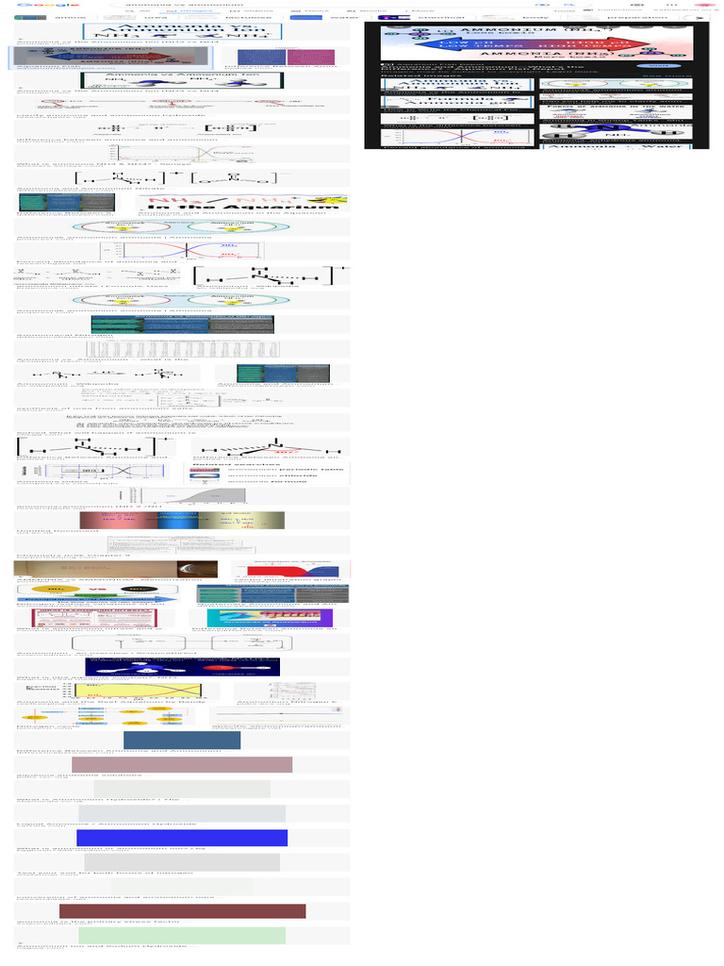
Concentration labels differ due to molar mass assumptions:
- Ammonium hydroxide concentrations are often reported as weight/volume (w/v) based on the molecular weight of NH4OH.
- Ammonia concentrations report weight/volume based on NH3’s molecular weight.
This discrepancy means a solution labeled as 4% ammonium hydroxide and one labeled as 4% ammonia contain slightly different actual ammonia amounts. Comparing their ammonia content is crucial before substituting one for another.
4. Chemical Behavior in Solution
Ammonia is a weak base with high solubility in water. When dissolved, it slightly ionizes:
NH3 + H2O ⇌ NH4+ + OH−
Not all dissolved ammonia exists as the hydroxide ion; only a fraction converts, which defines its weak base nature. This partial conversion raises the solution’s pH.
Both ammonium hydroxide solutions and aqueous ammonia are essentially the same liquid differing mainly by concentration.
Key Takeaways
- Ammonium hydroxide solution is ammonia gas dissolved in water; chemically, it is aqueous ammonia.
- Cloudy ammonia contains soap; ammonium hydroxide does not.
- Ammonia solutions are weak bases; only part converts to ammonium hydroxide in water.
- Concentration reporting differs by whether the formula weight of ammonia or ammonium hydroxide is used.
- Interchangeability relies on actual ammonia concentration, not just naming or labeling.
Ammonium Hydroxide Solution 4 VS Ammonia (as NH3)? What’s the Difference?
If you’re scratching your head over the difference between ammonium hydroxide solution 4 and ammonia (as NH3), here’s the scoop: ammonium hydroxide is ammonia gas dissolved in water, forming a weakly basic aqueous solution. The main difference lies in naming conventions, concentration reporting, and sometimes added components like soap in cloudy ammonia. That’s the bottom line, but let’s stroll down the chemical alley and unravel this mystery in more detail.
Picture ammonium hydroxide as a cocktail made from ammonia (NH3) and water — nothing fancy beyond that. When ammonia gas meets water, it doesn’t stay quiet; it partially reacts to form ammonium hydroxide (NH4OH). Chemists and product labels sometimes use these terms interchangeably, though technically it’s ammonia dissolved in water.
Ever heard of “cloudy ammonia”? It’s not just ammonia and water; it flaunts soap in the mix. So, if your cleaning product’s labeled “cloudy ammonia,” expect a triple cocktail of ammonia, water, and soap — a far cry from a pure ammonium hydroxide solution.
Composition: The Tale of Two Mixtures
Ammonium hydroxide is basically ammonia dissolved in water. No secret ingredients here. This solution varies in strength depending on how much ammonia gas bubbles into the water.
Cloudy ammonia, on the other hand, steps up the game with soap added. Soap not only gives cloudy ammonia its signature haze but also helps lift grease and grime better during cleaning. That extra ingredient differentiates it from pure ammonium hydroxide and affects its uses.
Why Do Names Matter? A Quick Chemistry Lesson
So why the two names, ammonium hydroxide and ammonia solution? When ammonia gas enters water, it reacts to form ammonium hydroxide. However, not all ammonia molecules convert — ammonia is a weak base. Essentially, it’s a dynamic equilibrium between dissolved ammonia molecules and ammonium hydroxide. This partial conversion means the name “ammonia solution” is technically more accurate.
Yet, in industry and everyday use, “ammonium hydroxide” is a common term. It sometimes misleads people into thinking ammonium hydroxide is a pure compound, but it’s really just the solution where ammonia coexists with water molecules.
Concentration Matters More Than Names
Let’s consider concentration: Reporting concentration as “ammonium hydroxide” versus “ammonia” can cause confusion due to molar mass differences. Here’s why: ammonium hydroxide consists of ammonia and hydroxide ion, but most of what’s measured is ammonia content. Thus, comparing these concentrations requires a conversion accounting for molecular weights.
If you want to substitute ammonium hydroxide solution with ammonia, the key is matching their ammonia concentrations, not just their names or labels. For example, a “4% ammonium hydroxide” solution roughly corresponds to 4% ammonia by weight, but confirm the exact figures before mixing formulations.
The Chemistry of It All: Ammonia as a Weak Base
When ammonia dissolves in water, it raises the pH by forming some ammonium hydroxide, but the conversion is partial. Ammonia remains mostly dissolved NH3 gas, and only a fraction turns into NH4OH. This is why ammonium hydroxide solutions are weakly basic (usually pH around 11), not strongly alkaline.
This partial conversion explains why liquid forms of ammonia and ammonium hydroxide feel chemically similar and behave alike. You can think of them as the same liquid but in different concentrations.
Practical Tips and Use Cases
- Shopping Tip: If you want a cleaning product, cloudy ammonia with soap might be better for grease. For chemical synthesis or lab use, pure ammonium hydroxide solutions are preferred.
- Measurement Tip: Always check concentrations on labels. A 4% ammonium hydroxide solution and 4% ammonia solution are almost identical — just watch out for how it’s reported.
- Handling Tip: Both are irritants and should be used in well-ventilated areas with gloves, but remember that ammonia gas can be pungent and hazardous at higher concentrations.
Wrapping Up
So, what’s the difference between ammonium hydroxide solution 4 and ammonia (NH3)? It’s mostly a difference of naming, concentration, and sometimes added soap. Ammonium hydroxide is ammonia dissolved in water, often about 4% concentration for common uses. “Ammonia” refers to the gas itself or the gas dissolved in water, which forms ammonium hydroxide.
Cloudy ammonia is a special cleaning cousin containing soap alongside ammonia and water, making it distinct.
When choosing between these, focus on their composition and ammonia concentration. That’s your ticket to understanding and using these substances properly.
Have you ever mixed up these terms during your cleaning routine or in the lab? Share your experiences below — and remember, chemistry is often about the details!
What exactly is ammonium hydroxide compared to ammonia (as NH3)?
Ammonium hydroxide is ammonia gas dissolved in water, forming a solution. Ammonia (as NH3) often refers to the pure gas or the ammonia content in solution.
Why are ammonium hydroxide and ammonia solution terms used interchangeably?
When ammonia gas dissolves in water, it forms ammonium hydroxide. Since this process is reversible and partial, the terms overlap in use, though “ammonia in solution” is more precise.
How does concentration differ between solutions labeled as ammonium hydroxide and ammonia?
The concentration values differ slightly due to the molar masses. It’s important to compare the ammonia concentration, not just the label, to determine equivalency in use.
Is cloudy ammonia the same as ammonium hydroxide solution?
No. Cloudy ammonia contains soap in addition to ammonia and water. Ammonium hydroxide solution is just ammonia dissolved in water without additives.
How does ammonia behave chemically when dissolved in water?
Ammonia is a weak base that partly converts to ammonium hydroxide in water, raising the pH. Not all ammonia gas forms hydroxide, leading to equilibrium in solution.
Can ammonium hydroxide and aqueous ammonia be used interchangeably?
They can be substituted if their ammonia concentrations are comparable. The main difference lies in concentration rather than chemical makeup.


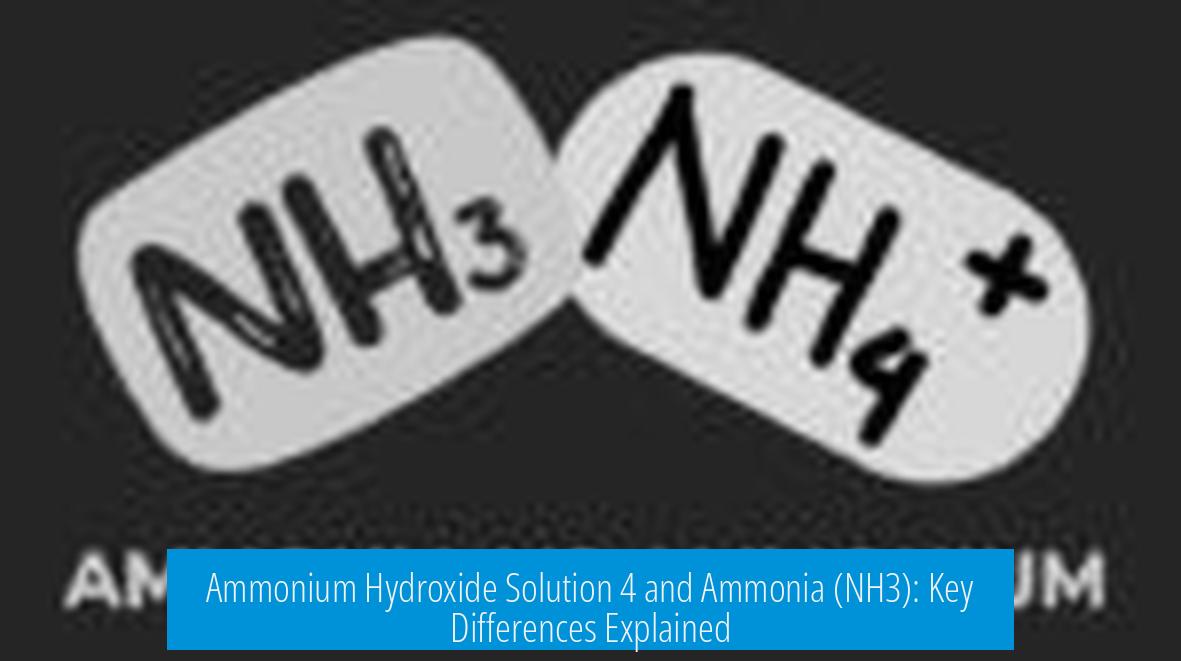
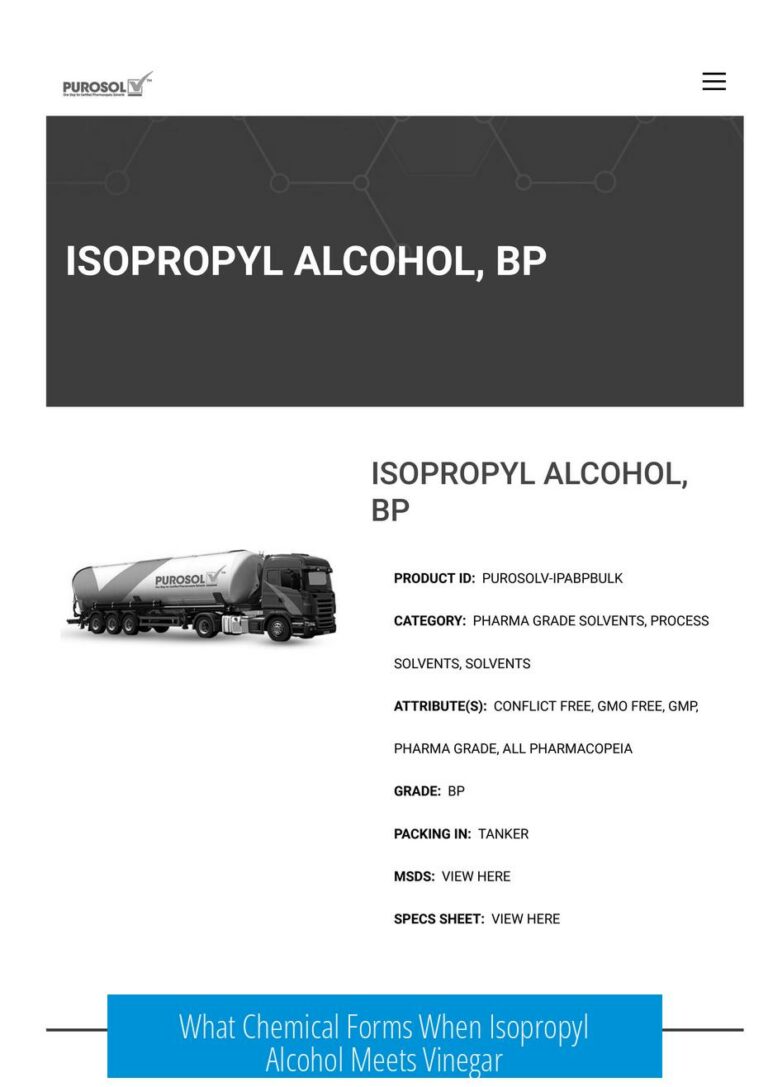

Leave a Comment